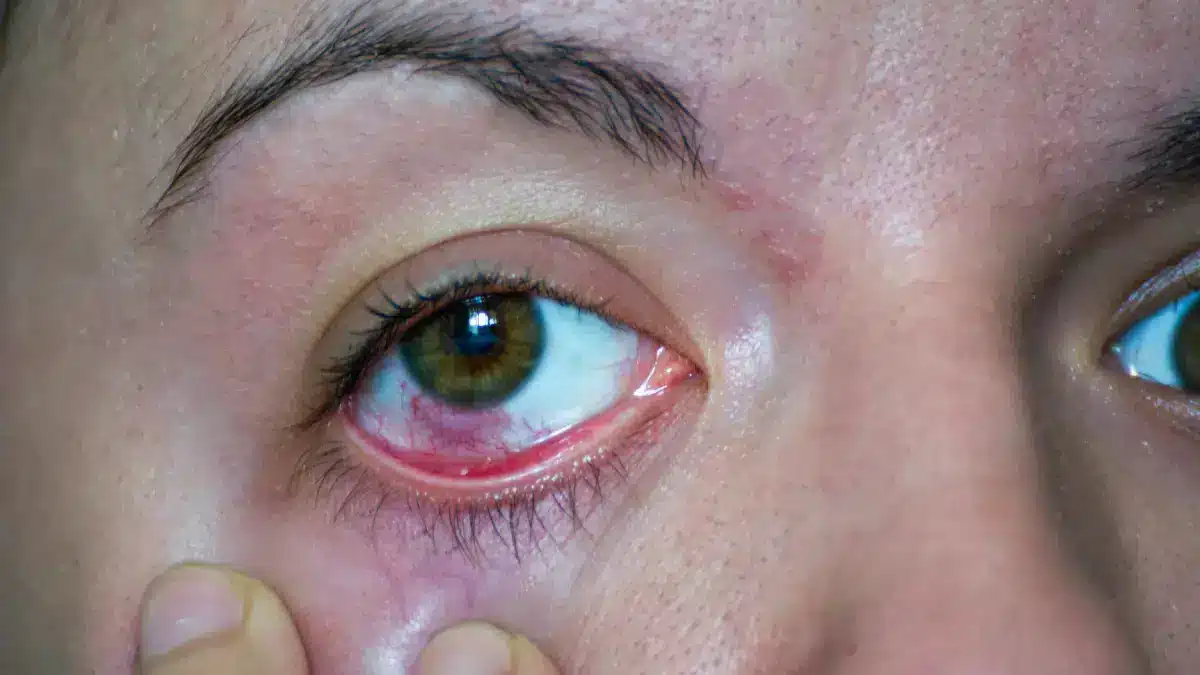Redness in the eye is often confused with infections, such as “pink eye,” medically known as Conjunctivitis.
While red eyes are a common symptom of the infection, they do not always indicate Conjunctivitis.
So, what is the difference between red eye and pink eye? They are both common ocular concerns that affect millions of people worldwide.
However, their causes and required treatment may be different .
This comparative article on “pink eye vs red eye” helps clarify the confusion between red and pink eye, exploring their causes and associated symptoms.
Pink eye vs red eye: An overview
Pink eye and red eye are terms often used interchangeably but indicate different conditions.
Pink eye is a specific term for an eye condition called Conjunctivitis, which causes the inflammation of the tissue covering the eyeball.
Red eye, alternatively, is a general term for the appearance of redness in the white part of the eye due to various factors. It is a common symptom of pink eye.
Save up to 90% on your medicine bills
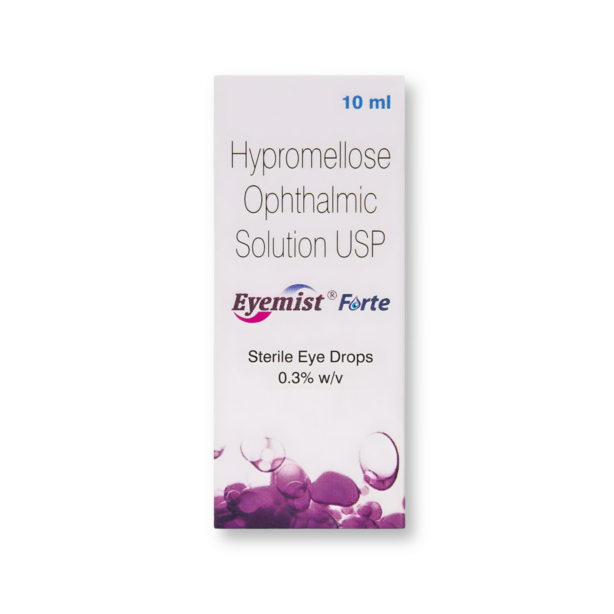
Eyemist Forte 10 ml
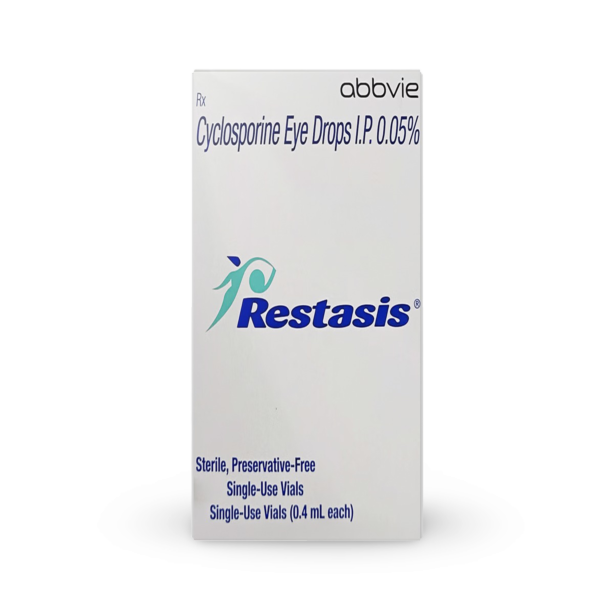
Restasis 0.05% Ophthalmic Emulsion 0.4ml
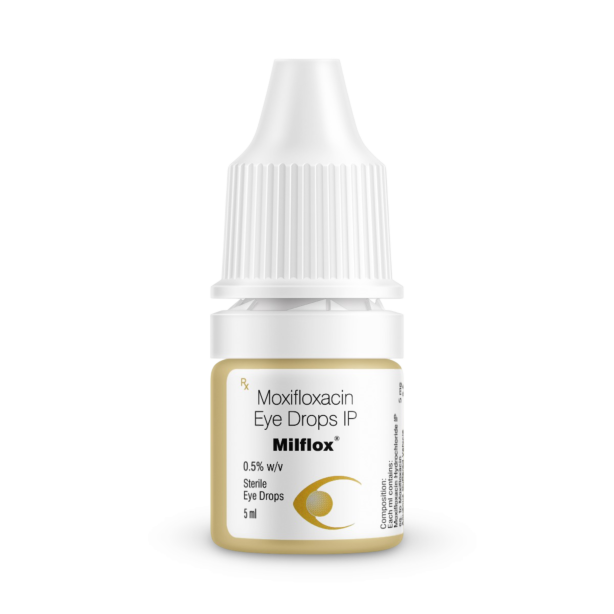
Milflox 0.5% 5 ml
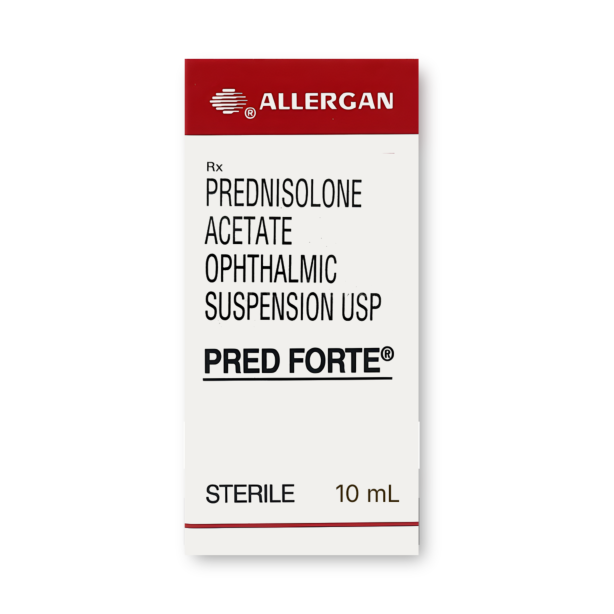
Pred Forte 10 ml
Understanding pink eye
Pink eye refers to inflammation of the thin, clear layer covering the eyeball and the inner eyelid (conjunctiva).
This condition can make the eyes appear red and bloodshot. Other common symptoms include:
- Pink eye discharge
- Tearing (watery eyes)
- Crusting of the eyelids
- Swollen and red eyes
- Eye pain
Pink eye or Conjunctivitis typically develops from viral or bacterial infections. Adenoviruses are primarily responsible for causing viral pink eye.
Bacterial pink eye may result from Staphylococcus aureus, Streptococcus pneumoniae, or Haemophilus influenzae infections.
In addition, allergic reactions (pollen, dust), irritants (smoke, chemicals), or contact lens-related irritations may also cause pink eye.
Various treatments are available for pink eye depending on its cause (viral, bacterial, or allergic).
Although viral cases generally resolve without treatment, natural remedies such as cold compresses may be needed to relieve swelling.
Bacterial infections can be treated with pink eye antibiotic eye drops, whereas allergic reactions may require antihistamines.
Understanding red eye
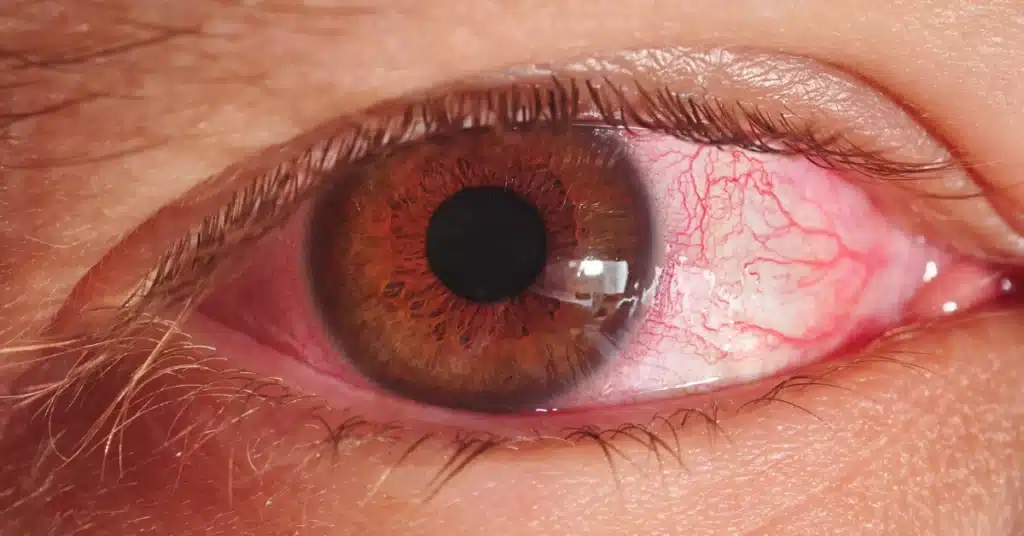 Source: dtimiraos_from_Getty_Images
Source: dtimiraos_from_Getty_ImagesA red eye is a general term used to describe an eye that appears red or bloodshot.
It typically occurs due to the dilation of blood vessels on the sclera (the white part of the eye).
Usually, red eyes are not worrisome and may occur due to dryness, irritation, eye strain, or a lack of sleep.
Mild eye redness is typically not accompanied by other noticeable symptoms.
However, you can also get red eyes from allergies, infections such as pink eye, or other underlying conditions.
In such cases, the redness in the eye may appear with other concerning symptoms.
The appearance and associated symptoms of red eyes usually indicate the underlying cause, such as:
| Symptom | Potential cause |
|---|---|
| Red spot in the white part of your eye | Broken blood vessel (Subconjunctival Hemorrhage) |
| Red itchy eyes or sore eyelids | Allergies |
| Sore, watery, or blurry eyes | Dry eyes |
| Red bumps under eyes | Chalazia |
| Redness around eyes | Blepharitis |
| Gritty feeling, burning sensation, discharge | Conjunctivitis |
| A sensation of a foreign object in the eye | Corneal abrasion, ingrown eyelash, contact lens complication |
| Eye pain and blurry vision with white patches on the cornea | Corneal ulcer |
| Halos around eyes | Glaucoma |
It is important to seek an eye specialist’s advice if you experience the symptoms mentioned above.
A medical professional can accurately diagnose the underlying cause and prescribe appropriate treatment.
The treatment of red eyes depends on the underlying cause or condition. Mild cases of red eye can be resolved with lubricating eye solutions for dryness or strain.
Managing allergies and taking prescribed medications for specific eye conditions may help treat red eyes.
Difference between pink eye and red eye
The term “pink eye” refers to a specific inflammatory condition, while red eye is a symptom of several eye issues.
Below is a “red eye vs pink eye” comparative table based on several factors:
| Category | Pink eye | Red eye |
|---|---|---|
| Appearance | Pink or redness in the whites of the eyes, often accompanied by swelling or discharge | Redness in the sclera (white part of the eye) due to enlarged blood vessels. May or may not include other noticeable symptoms |
| Definition | Inflammation of the conjunctiva | General term for eye redness |
| Associated Symptoms | Redness, itching, tearing, discharge (watery or pus-like), swelling, and sometimes crusting of eyelids | Ocular redness generally without associated discharge or other noticeable symptoms |
| Causes | Viral or bacterial eye infections, allergies, irritants | Various factors (irritation, dryness, allergies, eye strain) |
| Treatment | Antiviral/antibiotic eye drops, cold compresses, artificial tears | Based on underlying cause (allergy management, lubricating eye drops, specific eye condition treatment) |
The bottom line
This pink eye vs red eye comparison shows that both pink eye and red eye can cause eye redness.
However, the pink eye refers to a specific condition (Conjunctivitis), while red eye can occur from various ocular conditions.
Pink eye is caused by infections, allergies, or irritants that produce inflammation of the conjunctiva. It is often accompanied by discharge.
Red eye, on the other hand, is a broader term that encompasses a variety of causes for ocular redness.
It can cause Conjunctivitis, eye irritation, dryness, or underlying eye disorders.
Differentiating between the two eye concerns is critical for accurate diagnosis and therapy.

Frequently Asked Questions
If my eye is red, do I have pink eye?
Red eyes do not necessarily indicate pink eye. Redness in the eye could result from various factors, including irritation, dryness, or allergies, not exclusively pink eye.
Are eyes always red with pink eye?
Pink eye does not always cause redness. Red eyes are a common symptom of pink eye, but other symptoms like discharge, itching, or tearing may also occur.
Can I have pink eye without redness?
Pink eye is often associated with redness, but cases with low or no visible redness may occur, particularly in allergic or non-inflammatory cases.
How long do your eyes stay red with pink eye?
The duration of redness varies based on the cause. Viral or bacterial pink eye may cause redness for a few days to a week, but allergic pink eye might persist longer.
I don’t have pink eye, but my eyes are red. Why?
Besides pink eye, eye redness can be caused by irritation, dryness, exhaustion, allergies, or Subconjunctival Hemorrhage. Consultation with an eye care practitioner can assist in determining the problem.
When referencing outside resources, GoodrxMedicine always provides full citations. To learn more about the measures we use to maintain the quality of our content, please review our Content Information Policy.



